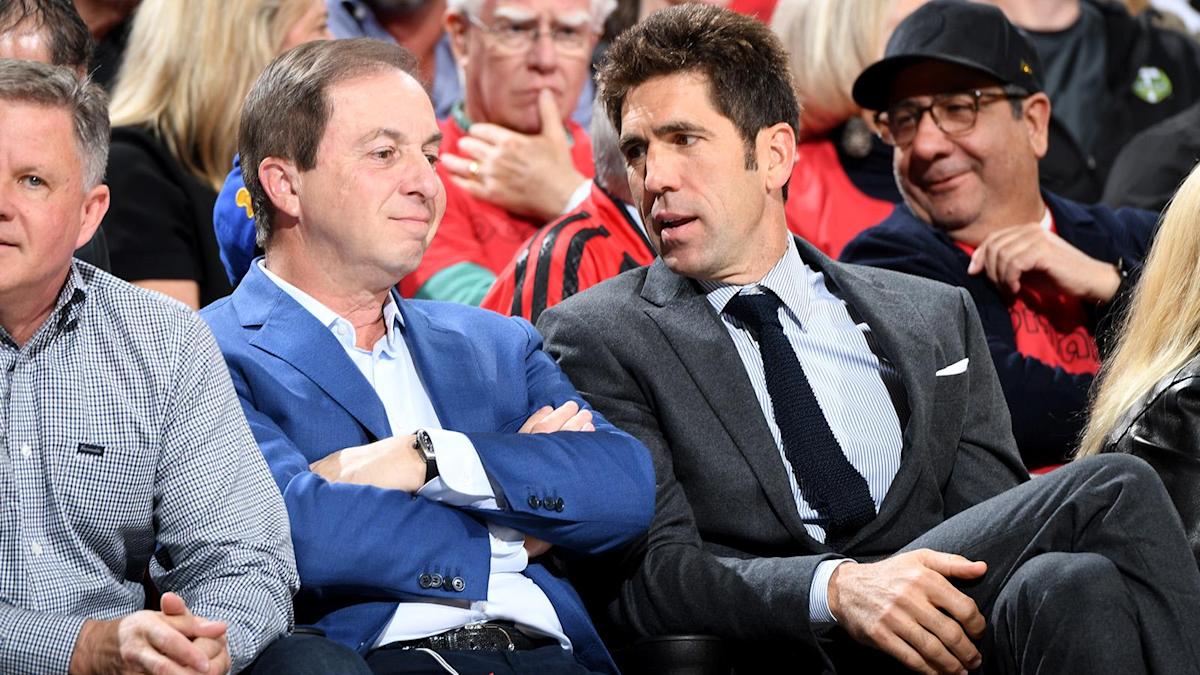
Warriors’ free-agent strategy indicates move towards future originally appeared on NBC Sports Bayarea
The Warriors lost a lot of soul Thursday afternoon when Juan Toscano-Anderson agreed to a contract with the Lakers, and they lost a lot of heart a few hours later when Gary Payton II agreed to a deal with the Trail Blazers.
They lost some sauce Friday morning when Otto Porter Jr. agreed to terms with the Toronto Raptors.
Those three body blows inflicted a lot of damage on a roster that 15 days ago won the NBA Finals. The rotation is fractured, as GP2 and OPJ are two of their top three reserves.
The Warriors, however, still believe they can recover, and the first step was securing an agreement with Kevon Looney on Friday. The 26-year-old center, an established part of the team’s core, accepted a three-year contract for a reported $25.5 million. He was the team’s top priority, slightly ahead of GP2 and OPJ.
The recent championship relieves some pressure; this week would have played out much differently if the Warriors were ousted by, say, Memphis. By winning, they created enough space to trust their process and rely on what has become clear to be a two-part strategy for the 2022-23 season.
Part I: CEO Joe Lacob is banking – literally – on the player-development staff to prepare youngsters Jonathan Kuminga, Moses Moody and James Wiseman for regular rotation minutes. Jama Mahlalela and his crew refined GP2 from an itinerant player searching for a role to someone contributing to an NBA Finals winner. They also shepherded Kuminga and Moody from teenagers not expected to contribute much as rookies to filling important minutes in the postseason. The expectation is that Wiseman not only will be in the rotation but eventually could and move into a starting role, with Looney coming off the bench.
The three lottery picks, still on rookie deals, are long-term investments. They represent Golden State’s future core and will spend considerable time on the floor.
Part II: General manager Bob Myers and his front-office lieutenants believe they can find a couple veterans willing to sign minimum contracts for the chance to play with champions and boost their value next summer. The low-key signings of Nemanja Bjelica and Porter last August did not excite a fan base longing for a splashy addition to “maximize the Stephen Curry title window,” but both played important roles. It worked so well that OPJ made three starts in the Finals. That strategy was designed to put the Warriors, after two non-playoff seasons, in position for an extended postseason run. Even they were uncertain about a championship.
Golden State’s top three bench players – Jordan Poole, GP2 and OPJ – earned a combined $6.5 million in salary. To put this into context, that’s about $3 million less than the Lakers paid Talen Horton-Tucker. For beer money, the Warriors received champagne showers. The massive return on investment was a form of corporate robbery.
Moreover, it emboldens the Warriors to believe they can in some ways repeat the process.
At the same time, winning it all in 2022 buys currency for 2023. It allows the Warriors to absorb a season without a parade. If they really were committed to “running it back,” as Myers indicated last week, they would have paid the cost to retain GP2 and OPJ.
The reason Porter was a lower priority than Payton is that he’s easier to replicate. Porter is a very good player, a plus rebounder, solid defender and an excellent shooter. Health permitting, he’s at or near the front of a reliable supporting cast. The Warriors got him on the cheap because demand was moderate.
They believe they can find someone capable of filling that void, with much of it divided among the three youngsters.
RELATED: What’s next for Warriors after tough start to free agency?
GP2 is another matter. Over the course of the season, he evolved from last man signed – a few days after being waived – to a fixture in the rotation. Among the Warriors who did not start at least three games in the Finals, only Jordan Poole played more minutes against the Celtics.
At 6-foot-3, Payton is the unlikeliest “designated dunker” the NBA. He was the team’s defensive attack dog, getting his hyperactive paws on passes and dribbles at an astonishing rate. His 2.8 steals per 36 minutes was tops in the NBA. More often than not, Payton would make a positive impact in the first minute he stepped onto the floor.
“He’s a unique player,” coach Steve Kerr said last week. “A different kind of player.”
GP2 wanted to return. The Warriors also wanted him back – but not at what would have cost upward of $50 million in salary and luxury taxes next season.
So, ownership is committing to giving more time to the future core while trusting the front office to find a veteran or two hoping to revive his career or play for a contender. Winning it all next season is not as urgent when you know rings will be presented on opening night.
